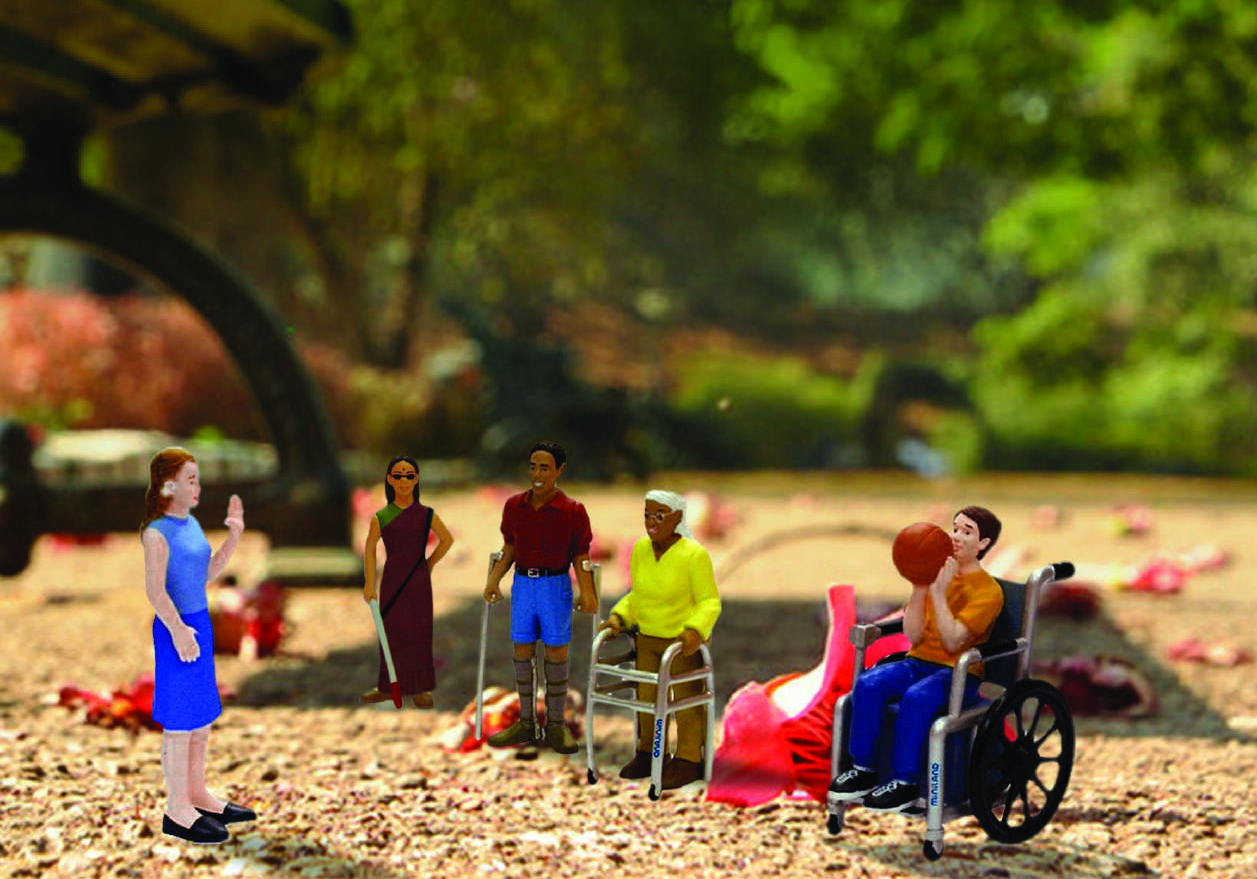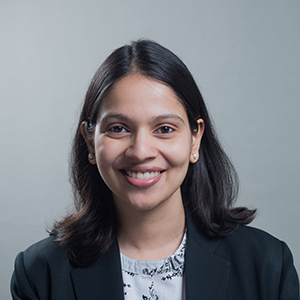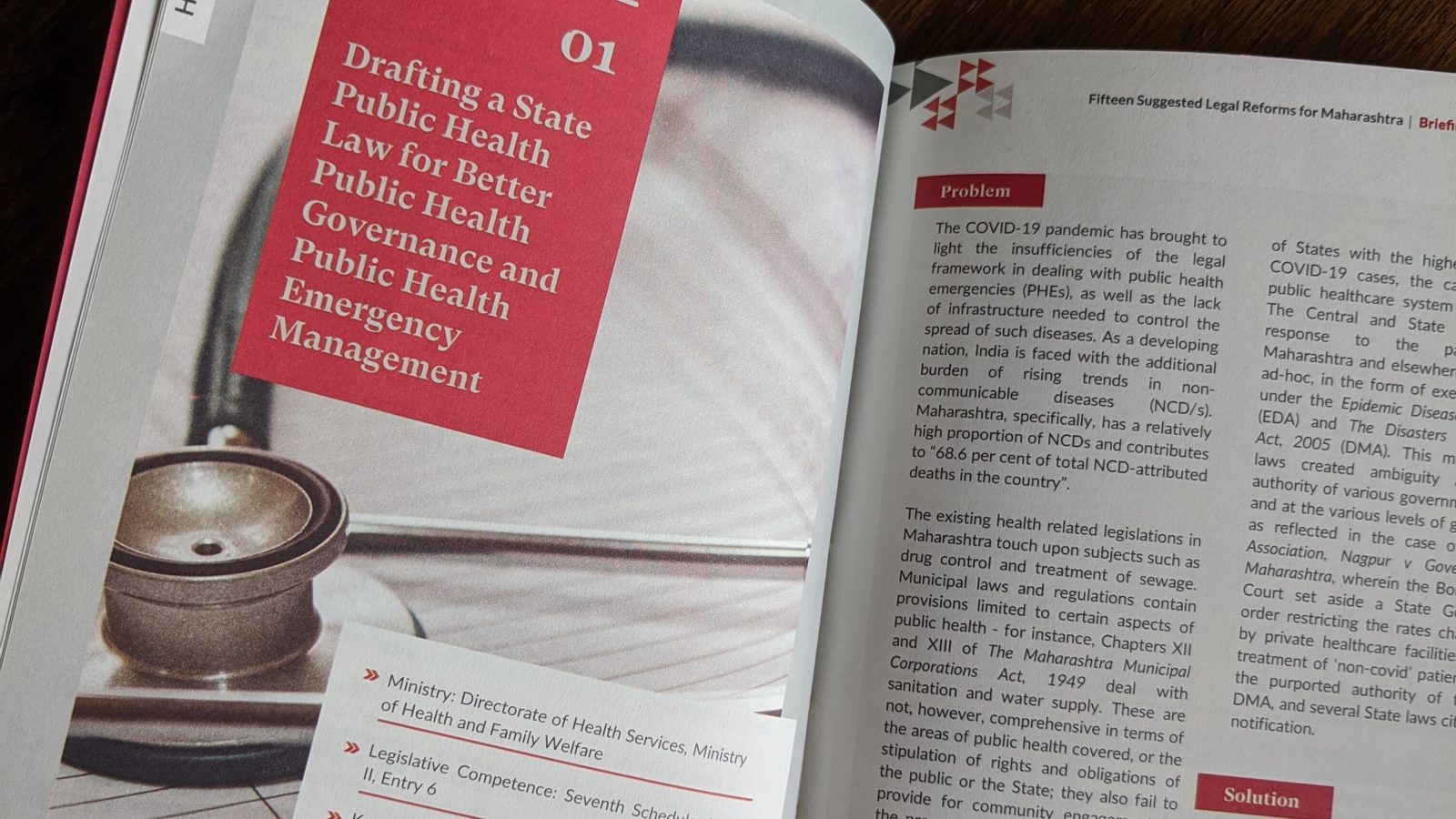
Beyond Reasonable Accommodation
Making Karnataka’s Cities Accessible by Design to Persons with Disabilities
INTRODUCTION
As per the 2011 Census of India, 2.21 per cent of the total Indian population of 121 crores were deemed to be persons with disabilities, constituting about 2.68 crores people, of which 31 per cent were living in urban areas. Within this population, factors such as gender, age, class, caste, religion, and sexuality, among others, intersect with disability, compounding the nature of the exclusion faced by persons with disabilities in Indian cities, with women and children with disabilities being among the worst affected. The lack of consideration of diversity of urban users in the social and spatial construction of the urban environment leads to ‘disabling’ of marginalised groups in the way cities are designed.
This white paper focuses on accessibility for persons with disabilities to urban space referring to the built environment, including public infrastructure and buildings, mobility and transportation, and other barriers to access such as ICTs in the city. It argues for the adoption of a progressive Universal Design approach, which accounts for the complex diversity of persons with disabilities, as mentioned above, encouraging inclusive planning practices with the participation of persons with disabilities, and revision of the limited scope of existing accessibility standards.
The paper also proposes several legal and policy changes that seek to address these concerns which can be implemented in the state of Karnataka, and notably, in the city of Bengaluru. It further analyses judicial trends in related judgements; addresses challenges in the implementation of accessibility norms; and finally, lays out pathways for the progressive realisation of Universal Design approaches, which go beyond the notion of reasonable accommodation. The benefits of Universal Design extend not only to persons with disabilities but to all persons, thus significantly reducing the overall vulnerabilities our urban spaces create.
While the laws examined in this paper are specific to Karnataka and Bengaluru, the recommendations, nonetheless, are relevant and translatable to all Indian urban centres. In order to identify areas for necessary legal and policy interventions, the paper adopts a mix of different research methods— literature review and analysis of existing legal and policy frameworks; structured and unstructured interviews with relevant stakeholders.
Legal framework
Despite the existence of various disability rights frameworks in India, there are significant challenges to the effective realisation of these rights. A key issue is while disability rights are guaranteed under central laws, their realisation in regard to accessibility to urban space lies in the domain of state and municipal laws, which vary across jurisdictions.
At the national level, the Constitution of India guarantees to all persons with disabilities the right to equality, freedom and life, including the right to accessibility, at par with any other person or citizen of India. This progressive, rights based regime is also reflected in the Rights of Persons with Disabilities Act, 2016 (RPWDA) which replaces the previously enacted Persons with Disabilities (Equal Opportunities, Protection of Rights and Full Participation) Act, 1995 that had a narrow focus aimed at early detection, prevention and rehabilitation. The RPWDA, which gives effect to India’s commitments under the United Nations Convention on the Rights of Persons with Disabilities, places the onus on the appropriate government to realise the rights and entitlements guaranteed under it.
While some of the norms are issued at the national level, their adoption, application, implementation and monitoring rests with state agencies, municipal bodies, development authorities and other urban local bodies (ULBs).
Legal norms for urban planning and accessibility of urban spaces
Planning is the starting point for sustainable development of an urban area. Towards this, the Town and Country Planning Organisation (TCPO), the technical wing of the Ministry of Housing and Urban Affairs (MOHUA; previously the Ministry of Urban Development) has issued the Urban and Regional Development Plans Formulation and Implementation Guidelines, 2014 (URDPFI Guidelines). These guidelines set out the methodology for preparing the master plan or development plan of a particular area, in view of the socio-economic requirements of the inhabitants of that area. The URDPFI Guidelines recognise that urban spaces as well as their infrastructure must be barrier-free and the planning process itself must be inclusive and participatory.
The URDPFI Guidelines merely serve as a model for state governments; town and country planning laws in India are required to be enacted by states. In case of Karnataka, the Karnataka Town and Country Planning Act, 1961 (KTCPA) lays down the procedure for preparing a master plan and designates planning authorities within the state who will be responsible for preparing the master plan for the planning area under their jurisdiction. The KTCPA designates the Bangalore Development Authority (BDA, which is constituted under the Bangalore Development Authority Act, 1976 or the BDA Act) as the planning authority for the city of Bengaluru.
Subsequent to planning of an urban area, the urban infrastructure itself must be accessible. The RPWDA prescribes the accessibility standards for various categories of urban spaces, i.e., built/physical environment, mobility and transportation, and ICTs.
Accessibility to physical environment (built infrastructure and public spaces)
Harmonised guidelines
The RPWDA notified the Harmonised Guidelines and Space Standards for Barrier Free Built Environment for Persons with Disabilities and Elderly Persons, 2016 issued by MOHUA (Harmonised Guidelines, which were revised in 2021) as laying down the accessibility standards for various aspects of the built environment: internal and external elements, toilets, stairs, corridors, lifts, parking, etc. The Harmonised Guidelines are binding and apply to all public buildings, i.e., buildings which are used or accessed by the public at large, whether built by private or government establishments.
The regulation of construction (including any approvals and inspections) as well as the specifications for various categories of buildings, including accessibility standards for public buildings, are typically set out in the building bye-laws issued by a municipal body. Municipal bodies, as authorities for municipal administration, are constituted by state-enacted laws. In case of Karnataka, the Karnataka Municipalities Act, 1964 (KM Act) and the Karnataka Municipal Corporations Act, 1976 (KMC Act) set up municipal corporations/ municipalities for different categories of urban areas; ward committees may be constituted further for certain municipal corporations. For Bengaluru, however, the Bruhat Bengaluru Mahanagara Palike (BBMP) was set up by an independent legislation, i.e., the Bruhat Bengaluru Mahanagara Palike Act, 2020 (BBMP Act) for municipal administration of the city of Bengaluru.
The regulation of construction (including any approvals and inspections) as well as the specifications for various categories of buildings, including accessibility standards for public buildings, are typically set out in the building bye-laws issued by a municipal body. Municipal bodies, as authorities for municipal administration, are constituted by state-enacted laws. In case of Karnataka, the Karnataka Municipalities Act, 1964 (KM Act) and the Karnataka Municipal Corporations Act, 1976 (KMC Act) set up municipal corporations/ municipalities for different categories of urban areas; ward committees may be constituted further for certain municipal corporations. For Bengaluru, however, the Bruhat Bengaluru Mahanagara Palike (BBMP) was set up by an independent legislation, i.e., the Bruhat Bengaluru Mahanagara Palike Act, 2020 (BBMP Act) for municipal administration of the city of Bengaluru.
Model building bye-laws, 2016, and National Building Code of India, 2016
Functions of municipal bodies include urban planning, roads and bridges, provision of urban facilities and public amenities, and regulation of land use and construction of buildings. Consequently, in order to perform these functions, municipal bodies may issue various bye-laws including building bye-laws. To this end, the Model Building Bye-Laws, 2016 (MBBL) issued by the TCPO and the National Building Code of India, 2016 (NBC) issued by the Bureau of Indian Standards (BIS) also act as guidance while preparing building bye-laws.
In Karnataka, model building bye-laws have been issued under the KM Act as well as the KMC Act, which are required to be adopted by municipal corporations/municipalities. Specifically for Bengaluru, the BBMP Building Bye-Laws issued in 2003 continue to remain applicable to construction of buildings in Bengaluru. In effect, the implementation of the nationally mandated Harmonised Guidelines at the local level comes down to the extent to which these guidelines are reflected in the building bye-laws issued by a municipal body.
Accessibility to mobility and transportation
Relevant ministries and state departments such the Ministry of Road Transport & Highways, Ministry of Housing and Urban Affairs and state road transport corporations, set the accessibility standards for that mode of transportation and the rest of the framework is largely based on policies and guidelines issued by the State Governments or authorities established for regulating land transport, such as the Directorate of Urban Land Transport in Karnataka.
Buses: For bus-based transportation, Rule 15 of the Rights of Persons with Disabilities Rules, 2017 specifies the technical standards for testing and approval of new models of buses. The RPDWA places obligations on the appropriate government to provide facilities for persons with disabilities at bus stops, railways stations and airports.
Air transport: For airports and air transport, the Civil Aviation Requirements issued by the Director General of Civil Aviation stipulate the accessibility standards for aircrafts and air transport. The requirements act as a checklist of compliance for granting permits to operate in India.
Railways: For railways, the Harmonised Guidelines for Passengers with Disabilities covers accessibility norms for information systems, railway stations and platforms to ensure that persons with disabilities are able to access the nation’s railways infrastructure. The National Urban Transport Policy,2014 and the Metro Rail Policy, 2017 released by the Ministry of Housing and Urban Affairs aim to comprehensively enhance urban mobility. They talk about the integration of the various modes of transport available in urban areas with an emphasis on universal design and accessibility.
Accessibility to Information and Communication Technology
When it comes to making Information and Communication Technologies accessible, the three key laws and standards are the RPWDA, 2016, RPD Rules, 2017 and the Guidelines for Indian Government Websites, 2019.
In this regard, the RPWDA places two obligations on the appropriate governments, one, that the government must lay down specific accessibility standards for information and technology and two, that it must take measures to ensure that all content which is available in audio, print and electronic media is in an accessible format. In this regard, it specifically requires that measures must be taken to ensure that persons with disabilities have access to accessible electronics based on universal design and that all electronic media is made accessible through the provision of audio descriptions, sign language interpretation and closed captioning.
Flowing from these obligations, the RPD Rules require that all establishments, which have been defined under the RPWDA as both government and private establishments, must follow the accessibility standards laid down by the government.
These standards have been set by the Central Government in the form of the Guidelines for Indian Government Websites, 2019. These guidelines follow the World Wide Web Consortium’s ‘Web Content Accessibility Guidelines’. They primarily establish that all government websites and mobile applications must follow the accessibility standards set herein to ensure that persons with disabilities may have access to them. Some of these standards include provisions such as close captioning, ideal contrast for persons with low vision and image descriptions, among others.
Judicial trends
There is also a discussion of the judicial trends in India towards recognising and interpreting the rights of persons with disabilities, specifically in the context of accessibility to urban space. A set of twelve landmark decisions from the Supreme Court of India and High Courts of Karnataka, Bombay, Delhi and Calcutta have been analysed in this section. These trends exhibit the judiciary’s awareness of the issues faced by persons with disabilities and its empathy towards the same. The pattern evident from the selection of cases studied is that the petitioner in each case is usually a person with disability who has been denied access to a service on account of their disability. The cases have mainly dissected the bundle of rights available under the Persons with Disabilities (Equal Opportunities, Protection of Rights and Full Participation) Act,1995 and the RPWDA while also reiterating the constitutional provisions and international commitments India has under various conventions such as the UNCRPD towards securing the rights of persons with disabilities.
ISSUES FOR CONSIDERATION
A critical analysis of the laws impacting accessibility to urban space indicates the failure to incorporate the spirit of accessibility as well as specific access requirements into the existing legal frameworks governing urban planning, design, and governance in the state of Karnataka as well as in the rest of India. Based on the analysis of existing legal and policy frameworks from a disability and feminist perspective, the following issues emerge for consideration:
A) Problems in understanding accessibility
While thinking of accessibility, it is essential to take into account external constraints including affordability, competing priorities, and availability of technology and knowledge, along with sensitivity to cultural differences. The following problems emerge in the context of understanding accessibility to urban space.
a) Emphasis on physical disability, limited consideration of invisible disabilities in accessibility standards, which results in the exclusion of persons with intellectual, mental and psychosocial disabilities and their needs from urban space
b) Persistent lack of imagination in envisioning urban accessibility, which results in a lack of consideration of persons with disabilities as imagined users of the city as well as an absence of centering women and girls with disabilities, so that access is not understood in isolation but in relation to safety and dignity in the city, including issues that women with disabilities face disproportionately owing to the combined experience of gender and disability.
c) Limitations of barrier free design and need for cross-disability perspectives, to ensure that accessibility is not reduced to wheelchair accessibility, but considers the diversity of disabilities and their differing needs. It is necessary to shift focus on only physical dimensions of space, to a universal design approach that considers all disabilities and is sensitive to factors such as gender, affordability, age, among others.
d) Structural problems in urban planning frameworks, which include larger systemic problems in existing urban planning and municipal governance frameworks such as lack of decentralisation of planning functions and lack of inclusive practices in urban design. The existing urban planning paradigm does not enable participatory planning or facilitate representation of vulnerable groups such as women with disabilities in the planning process.
B) Challenges in implementation of existing legal frameworks
Despite the prevalence of legal frameworks that address accessibility in a variety of contexts such as the built environment, transport and mobility, and ICTs, among others, there are significant challenges that hinder implementation of such frameworks. They are:
a) Built environment
While the municipal legal framework sets out the accessibility standards to be followed in public buildings along with inspection requirements, in reality, these are not strictly enforced, and such buildings continue to remain inaccessible to persons with disabilities. Furthermore, while bye-laws under the KMC Act, KM Act and BBMP Act have been issued by the state government, they have not been updated to reflect the recent changes in accessibility standards, rendering the regulations outdated in the face of changing standards and the latest research. While there is a provision for empanelment of professionals for inspecting and certifying that a building has complied with all the requirements stipulated in the bye-laws, this does not include persons with disabilities.
b) Public procurement
A review of public procurement law and illustrative tenders issued by municipal authorities, within the state of Karnataka, indicates that a disability perspective is absent in the state’s current public procurement laws and policy. This is an oversight, since public procurement processes have gained attention increasingly as a key area for intervention and an effective implementation tool to promote accessibility of products and services procured by the government.
c) Information and communication technology
The primary issue for consideration when it comes to information and communication technology accessibility in India, is the ambiguity that exists on whether or not the Guidelines for Indian Government websites are applicable to private establishments as well. As per the RPWDA and the RPWD Rules, these standards are equally applicable to private entities. However, a reading of the law shows that the current guidelines seem to apply only to government websites. This is in contravention of the above stated laws and must be rectified immediately through the unambiguous inclusion of private enterprise websites and applications within the current guidelines.
d) Mobility and transportation
The primary issue for consideration in the space of mobility and transportation is the lack of a unified policymaking and implementation body. This has affected the execution of transportation policies that are otherwise cognizant of accessibility standards. Due to the involvement of multiple ministries and agencies at the central, state and municipal levels, planning and regulation of public transport is fragmented.
e) Lack of adequate monitoring and maintenance of accessibility initiatives
Even if accessibility initiatives have been undertaken, their ongoing maintenance and monitoring is critical to ensure that such a space is permanently accessible and to ensure that external factors are not disruptive to continued accessibility. The lack of ongoing stakeholder engagement was found to be a significant hurdle in securing an accessibility initiative’s lifespan. Involving local Disabled People’s Organisations in the monitoring and maintenance of accessibility infrastructure in their localities could prove critical for the continuation of accessibility initiatives.
f) Lack of coordination, sensitisation and capacity building
A key challenge is the lack of coordination between different government departments which operate in silos. There is a lack of sensitisation, awareness, and technical capacity both within the government as well as the private sector, particularly at the level of implementation in local settings. There is a lack of appropriate training for architects, engineers, urban planners, and managers working at the municipal level, along with those involved in procurement and monitoring as well as contract management. Inclusive design approaches are also not a part of the curriculum in professional degrees like civil engineering, architecture, and other allied disciplines.
C) Adopting and implementing Universal Design
The early incorporation of Universal Design rooted in local contexts following a participatory and consultative process is key to building equitable cities. Adopting Universal Design in the initial stages of planning contributes only 0–1 percent of additional costs, if any, and often, redesigning for accessible buildings requires no additional space, only rearrangement of the existing plan. It is important to note that while Universal Design emerged primarily with regard to accessibility for persons with disabilities, it is also a key broad-spectrum solution that is beneficial to everyone, including the elderly, people with strollers, pregnant women, people with chronic illnesses, and children, with the aim of removing barriers to access and creating an inclusive environment for everyone.
CASE STUDIES
- Inclusive play spaces by Kilikili
Kilikili has been instrumental in the construction of eight universally designed, accessible parks for children with disabilities in India. These parks are used by all children, regardless of ability and thus also break the silos and isolation faced by children with disabilities, allowing them to interact with their peers in a social setting.
Kilikili does this through inclusive participation. The parks that they have designed have come to fruition through extensive consultations centering on and involving children with disabilities themselves, constructive liaising with Urban Local Bodies and comprehensive design inputs from knowledgeable experts in design and architecture. Some of these design changes include ramps and adapted play equipment (such as a swing set with both bench and bucket seating, tire swings, a concave slide with higher hand grips, see-saws with safety belts, wheelchair-accessible merry-go-rounds, multisensory toys, etc.).
- Accessible urban transport systems with the Delhi Metro Rail Corporation
The Delhi Metro Rail Corporation (DMRC) partnered with Samarthyam, a cross-disability advocacy civil society organisation working towards promoting universal accessibility, during the inception phase of the project itself.
It ensured that all stations have accessibility features including tactile pavements, space to park wheelchairs, handlebars inside the metro compartments and accessible elevators. Stations also have audiovisual indicators and announcements for entry-exit and station names. There are also metro sahayaks (helpers), who are available at the metro stations to assist persons with disabilities upon request.
- Assisted community living for homeless persons with mental illness by Iswar Sankalpa
Iswar Sankalpa has been working in West Bengal to provide vocational training, healthcare, housing and support to persons with psychosocial disabilities by engaging with the police, the municipal corporation and the state government. Its flagship programme Naya Daur provides dedicated community-assisted care to homeless persons living with mental illness in the neighbourhoods they occupy without relocating them to shelters. Iswar Sankalpa offers substantive proof of concept for breaking down disability supportive services to the local community level. Naya Daur, was recognised by the World Health Organisation as a “good practice community mental health service”.
- Easy assistance from the Passenger App
The Passenger Assistance App was commissioned to be built by Britain’s Rail Delivery Group, which oversees the operations of the railways in the United Kingdom. The application allows users with disabilities to book assistance while using public transportation. The application was designed after identifying major issues that prevented the railways from being accessible and utilising data on these issues from all railway stations. It was designed after consultations and testing with an accessibility panel composed of people with a diverse range of accessibility needs.
RECOMMENDATIONS
| S. No. | Summary of Recommendations |
| I. | Encouraging inclusive and participative planning and the representation of persons with disabilities |
| A) | Amendment to the Karnataka Town and Country Planning Act, 1961 To divest the Bangalore Development Authority of its planning and regulatory functions and to assign this to the BBMP for the city of BengaluruTo require the representation of persons with disabilities, particularly women with disabilities, among members of the authorityTo incorporate principles of inclusive and participatory planning, with tools such as community charrettes, focus groups, accessibility audits, and the collection of disaggregated data on disability as part of the master planning exercise |
| B) | Amendment to the Bangalore Development Authority Act, 1976 To include persons with disabilities, notably women with disabilities and representatives of local DPOs (till such time the BBMP is designated as the planning authority for the city of Bengaluru under the KTCP Act) |
| C) | Amendment to the Karnataka Municipal Corporation Act, 1976 To alter the composition of ward committees to include the representation of persons with disabilities, notably women with disabilities and local DPOs, who are active in the ward, as members in the ward committee To remove the extraordinary veto power conferred on the councillor with regard to ward committee meetings, which undermines the fundamental principles of community participation in the wardsTo endow ward committees with greater functions such as preparing ward plans for their respective wards. |
| D) | Amendment to the Bruhat Bengaluru Mahanagara Palike Act, 2020 To alter the composition of ward committees to include representation of persons with disabilities, notably women with disabilities and representatives of local DPOs in the city of BengaluruTo endow ward committees with greater functions, such as preparing ward plans for their respective wards in the city of Bengaluru |
| II. | Revising accessibility standards to ensure better understanding of accessibility |
| A) | Regular review and updating of existing accessibility standards after consultation with all stakeholders Harmonised Guidelines to be reviewed periodically by MoHUA and made more comprehensive to include, at a minimum, all categories of disabilities currently listed under the RPWD Act (specifically persons with ‘invisible’ disabilities)Mechanism of periodic review and assessment to be set up to ensure that rules and regulations at the municipal level (such as KMC Act bye-laws, KM Act bye-laws and BBMP bye-laws) are updated in-line with changes in national accessibility standards |
| B) | Review and notifying additional accessibility standards for transportation The Harmonised Guidelines applicable to Indian Railways by the Ministry of Railways should be revised and updated by the Ministry of RailwaysThe Handbook on Barrier Free Space Standards for Built Environment for Persons with Reduced Mobility issued by the Ministry of Civil Aviation should be revised and updated by the Director General of Civil AviationThese guidelines should be made mandatory as an additional accessibility standard for transportation by notifying them under the RPWD Rules |
| C) | Extending accessibility standards on information and communication technology Amend the Guidelines for Indian Government Websites to reflect that mobile apps and web pages of private entities must also follow the accessibility norms prescribed under the said GuidelinesInitiate the process of identifying facilities and services to be provided to the public in urban areas, commence the preparation of accessibility standards for the specific facility or service, and notify the same under the RPWD Rules |
| III. | Undertaking training, sensitisation and capacity building measures Where the state advisory board and the district-level committee (as applicable to the city of Bengaluru), bodies required to be set up by the state government under the RPWD Act, have not been set up, it must be done so at the earliestOfficers at multiple levels of the government are to be trained bi-annually in addition to being provided regular orientation sessions on disability laws and their functions for institutional knowledge buildingIn the short-term, for personnel at the level of state government and municipal authorities, well-known NGOs working in the space of disability rights may be empanelled as trainers whose mandate would be to train such personnel periodically, on issues concerning disability rights and accessibilityIn the long-term, it is suggested that disability awareness cells staffed with experts in the field of disability laws and accessibility and other allied fields be created (at both levels) so that they can develop the institutional capacity to adequately train such personnel |
| IV. | Incorporating accessibility norms in public procurement policies Expand the preferential policy in tendering to include persons with disabilities. Similarly, amend Karnataka Transparency in Public Procurements Rules, 2000 |
| V. | Ensuring better implementation of existing legal frameworks on accessibility |
| A) | Implementing accessibility standards in built environment Amend model bye-laws issued under the KM Act as well as the KMC Act to clearly mandate inspection and certification of all public buildings (to which the accessibility standards apply) by persons with disabilities (in addition to inspections carried out by other professionals already designated as ‘empanelled professionals’)The definition of ‘empanelled professionals’ under these bye-laws must be amended to include persons with disabilities (including DPOs).BBMP Building bye-laws are to be revised on similar lines, as mentioned above |
| B) | Implementing accessibility standards in mobility and transportation Pass the Bengaluru Metropolitan Land Transport Authority Bill which will create an overarching regulatory authority for mobility and transport planning, vested with control and oversight over transportation in the city as well as over various bodies, such as the Bengaluru Metropolitan Transport Corporation and the Bengaluru Metro Rail Corporation Limited Ensure harmonisation between transportation policies and land use policies |
| VI. | Making progress towards the implementation of Universal Design Amending the RPWD Act to adopt Universal Design as the standard principle for accessibility to ensure built infrastructure, transportation, and services adopt UD principlesUniversal Design be adopted in the URDPFI Guidelines and Harmonised Guidelines, followed by the NBC, MBBL and KMC Act bye-laws, KM Act bye-laws, and BBMP Bye-Laws to ensure that Universal Design is implemented at all levels.Corresponding changes to procurement laws as well as capacity building, training, and awareness generation to have Universal Design as the approach to urban planning in India. |







